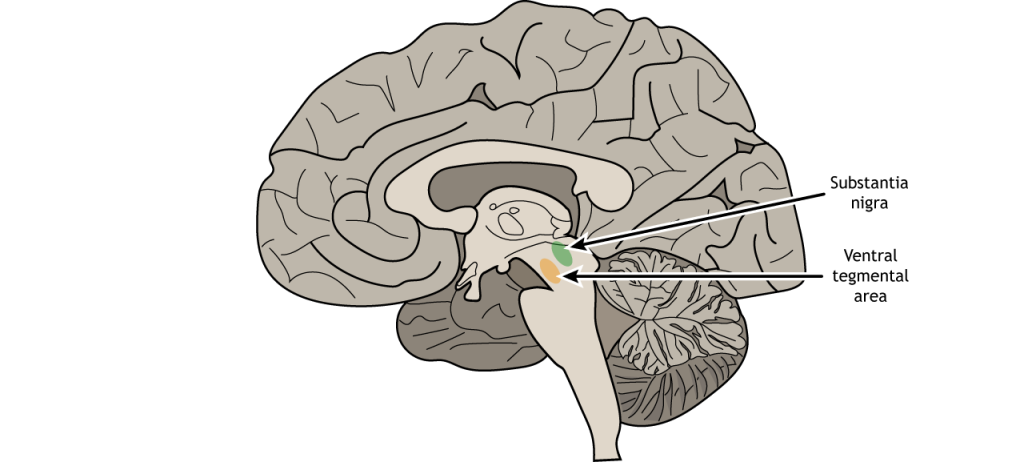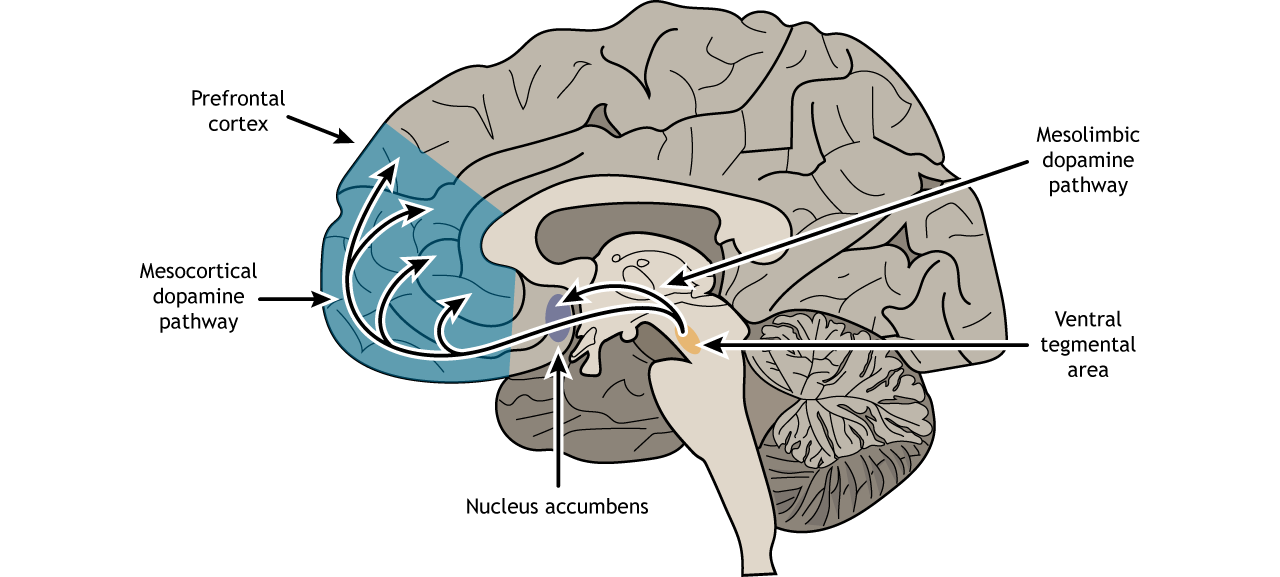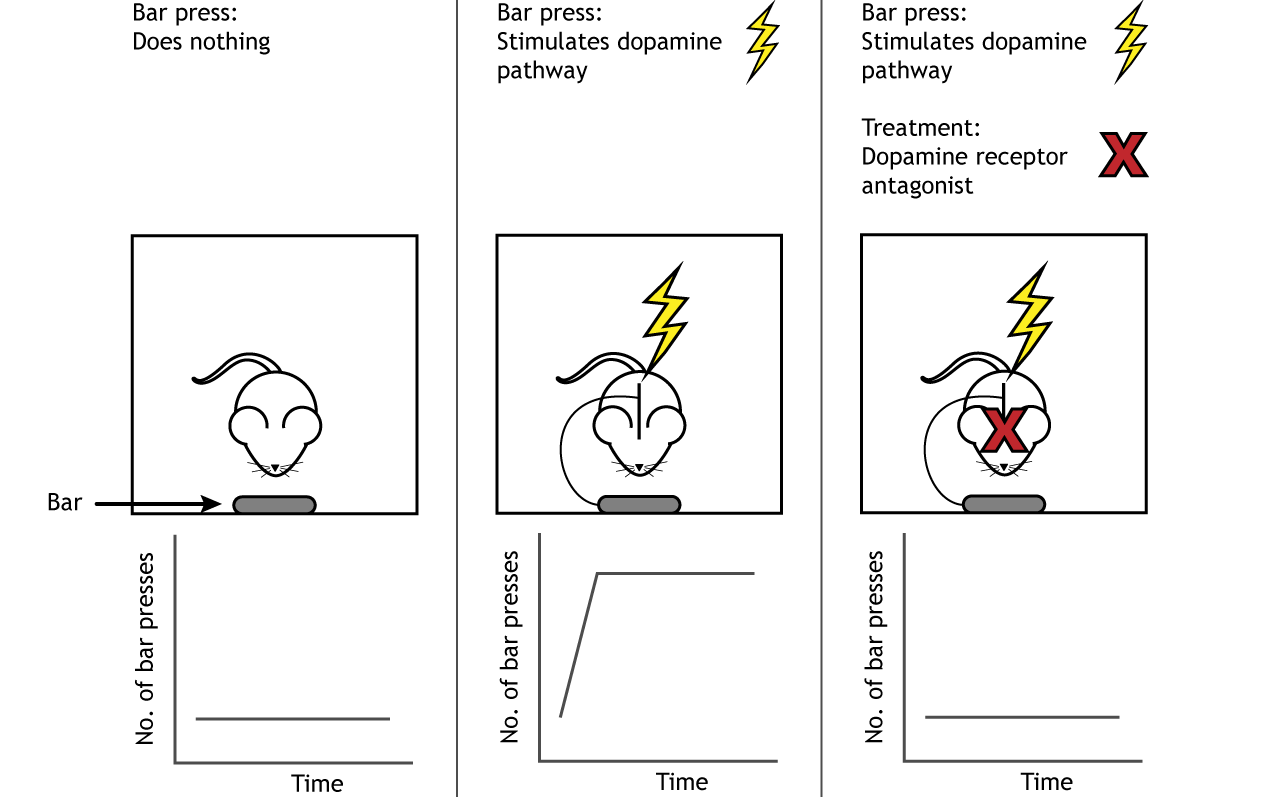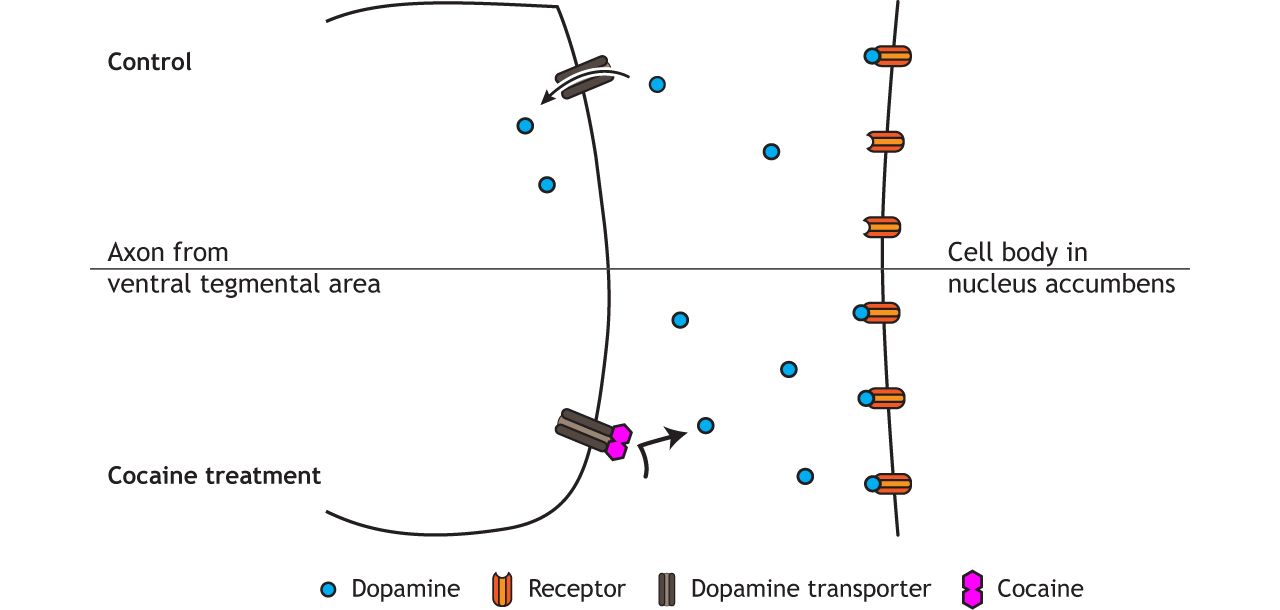43 Motivation and Reward
Casey Henley
Motivated behaviors are voluntary behaviors that individuals find rewarding or pleasurable. Certain behaviors or stimuli, like food or sex, are naturally rewarding because they are necessary for the survival of a species; they are adaptive, and the nervous system has evolved to make these behaviors pleasurable. Rewarding stimuli increases brain activation in brain regions that comprise the reward circuit.
Reward Circuit
The reward circuit depends on the action of dopamine. Dopamine is synthesized and released by neurons located in the ventral tegmental area (VTA), a midbrain region adjacent to the substantia nigra (remember the substantia nigra from the basal ganglia chapter).

There are two primary pathways from the VTA that are important for reward. The mesolimbic pathway connects the VTA to the nucleus accumbens, a region located in the ventral striatum (again, remember the basal ganglia chapter). The mesocortical pathway connects the VTA with the prefrontal cortex.

View the amygdala using the BrainFacts.org 3D Brain
View the amygdala using the BrainFacts.org 3D Brain
Early experimental studies showed that rodents with an electrode placed along these dopaminergic pathways will complete tasks, like a bar press, to self-stimulate the regions. Often the animals would forgo other behaviors, like eating, to continue pressing the bar. Treatment with drugs that block the receptors for dopamine reduce the self-stimulating behavior, indicating that dopamine is the critical neurotransmitter involved in making the stimulation of these brain regions rewarding.

However, continued research suggests the connection between dopamine release and reward may not be as simple as the self-stimulation studies imply. It appears that it is not the reward itself that increases dopamine, but the predicted expectation of the reward . Dopamine signaling increases during anticipation of a predicted reward. If the level of reward is more than predicted, reward learning occurs, and dopamine signaling and motivation to repeat that behavior increases. If the level of reward is less than predicted, then dopamine signaling decreases as does motivation to repeat the behavior.
Rewarding stimuli
Natural rewards that increase survival and fitness of a species activate the reward circuit. These behaviors and stimuli include certain food (like those containing high sugar or fat levels), social bonding, parental bonding, and sex. Most drugs of abuse also activate the reward circuit and dopamine signaling, which plays a critical role in the formation of addiction. For example, cocaine blocks dopamine reuptake into presynaptic VTA terminals; heroin and nicotine increase dopamine release from the VTA. These alterations increase dopamine effect on neurons in the nucleus accumbens.

Key Takeaways
- The reward circuit involves dopamine release from the ventral tegmental area into the nucleus accumbens and prefrontal cortex.
- Self-stimulation experiments demonstrate the role of dopamine and the reward circuit
- Dopamine signaling likely predicts reward value and can be altered if predicted outcomes differ from actual outcomes
- Drugs of abuse act upon the reward circuit
- Animation overview: Brain Reward: Understanding How the Brain Responds to Natural Rewards and Drugs of Abuse
Video Version of Lesson
Media Attributions
- Ventral Tegmental Area © Casey Henley is licensed under a CC BY-NC-SA (Attribution NonCommercial ShareAlike) license
- Private: fig-1-2xEDIT
- Private: Fig3.42_draft
- Private: fig3.41_draft

